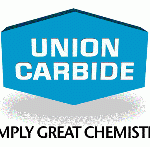 Dian Cucchisi, PhD, CHMM
Dian Cucchisi, PhD, CHMMThe Bhopal Disaster has been in the news again with the eight former company executives getting convicted of negligence. A court in the Indian city of Bhopal returned the verdict on June 7, 2010, more than 25 years after the incident.
What was the Bhopal Disaster?
For those of us old enough to remember, the words Bhopal, India brings to mind the very tragic events of December 2, 1984. On that day a Union Carbide facility had an accidental release of approximately 40 tons of methyl isocyanate, a chemical used in pesticides. The chemical plume killed 3,000 people and left an estimated 500,000 people with long-term, damaging health effects. Amnesty International reports that approximately 15,000 people died in the subsequent years as a result of this incident. As a result the Union Carbide Bhopal accident is often considered the world's worst industrial disaster.
And then a smaller, but similar event occurred in the USA
In August 1985 a Union Carbide facility located in Institute, West Virginia experienced an accidental release of toxic chemicals causing more than 100 residents of the area to seek medical treatment.
US Regulators Respond to Community Concerns
In response to these incidents and the growing concern by the American public that this could happen in their backyard, regulatory agencies enacted laws for facilities that manufacture, store, or use certain chemicals above designated threshold quantities.
In 1986 the United States Congress passed the Emergency Planning and Community Right to Know Act (EPCRA). The law requires facilities to annually report the quantities of extremely hazardous substances to the facilitys state and the Local Emergency Planning Committee (LEPC). This information is available to any member of the public upon request to the LEPC.
In late 1985, the Occupational Safety and Health Administration (OSHA) created the Hazard Communication Standard (HCS) (29 CFR 1910.1200) also known as Right to Know. The HCS requires manufacturers and distributors of hazardous materials to communicate to employees the hazards of the chemicals in their workplace by providing Material Safety Data Sheets (MSDS) and ensure that hazardous materials are labeled according to certain requirements.
The Clean Air Act was amended by Congress in 1990, including some regulatory changes intending to create safer workplaces and mitigate the risk of a Bhopal-like disaster in the US, such as:
- Charging the EPA and OSHA with more authority over the chemical industry.
- OSHA created the Process Safety Management Standard (29 CFR 1910.119), a program that looks in depth at process technologies, procedures and management practices.
- The EPA codified Chemical Accident Prevention Provisions (40 CFR Part 68) which requires facilities to conduct a hazard assessment, develop a prevention program, and implement a risk management plan.
- Other laws that regulate the use of hazardous materials were enhanced. These include the Toxic Substance Control Act (TSCA); the Resource, Conservation and Recovery Act (RCRA); and the Comprehensive Environmental Response, Compensation and Liability Act (CERCLA).
- Creating the U.S. Chemical Safety and Hazard Investigation Board (CSB).
The Senate legislative history states: "The principal role of the new chemical safety board is to investigate accidents to determine the conditions and circumstances which led up to the event and to identify the cause or causes so that similar events might be prevented." Congress gave the CSB a unique statutory mission and provided in law that no other agency or executive branch official may direct the activities of the Board. Congress directed that the CSB's investigative function be completely independent of the rulemaking, inspection, and enforcement authorities of EPA and OSHA. The CSB became operational in January 1998.
Accidents in the U.S. STILL OCCUR
In spite of this, accidents continue to happen. In 2002, the Chemical Safety and Hazard Investigation Board (CSB) examined 167 chemical accidents that occurred between 1980 and 2001. More than half of those accidents involved chemicals not covered by the regulations mentioned above. The CSB recommended that the EPA and OSHA expand their regulations. The Agencies did not agree with the recommendation stating they feel the best approach is worker education. In 2004, OSHA formed an alliance with the EPA, the American Chemistry Council (ACC), and others to develop and provide worker education on chemical reactivity hazards.
How do you feel about the expansion of regulations to include chemicals currently not covered by regulations designed to prevent accidents and reduce health risk?


